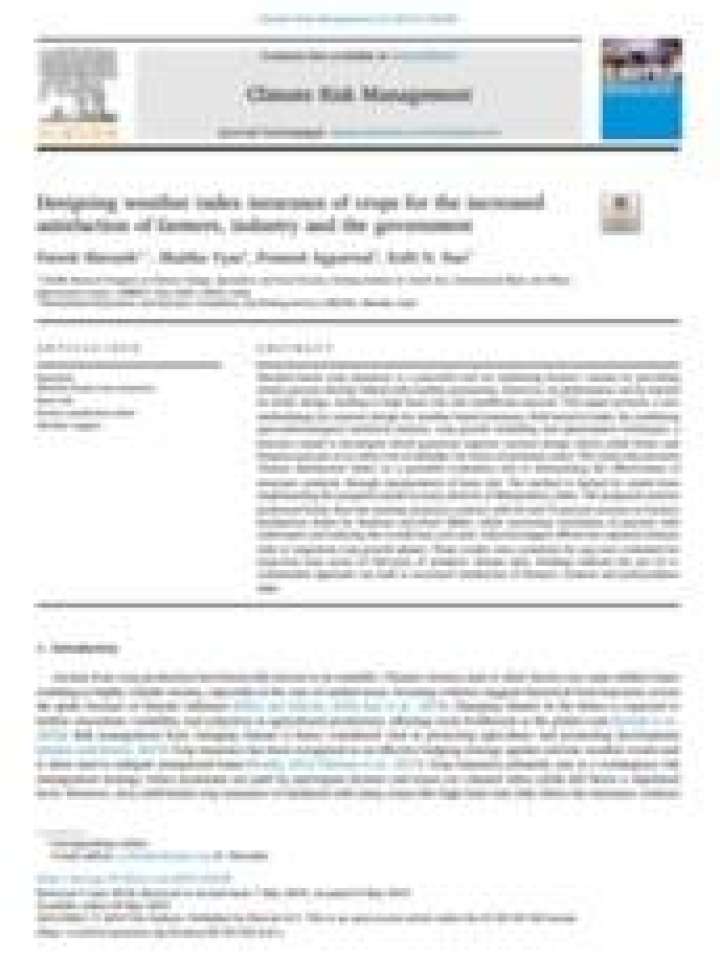Designing weather index insurance of crops for the increased satisfaction of farmers, industry and the government
Weather-based crop insurance is a powerful tool for stabilizing farmers’ income by providing timely payouts directly linked with weather parameters. However, its performance can be marred by faulty design, leading to high basis risk and insufficient payouts. This paper presents a new methodology for contract design for weather-based insurance, field tested in India. By combining agro-meteorological statistical analysis, crop growth modelling and optimization techniques, a heuristic model is developed which generates superior contract design which yields better and frequent payouts at no extra cost of subsidies (in terms of premium rates).
The study also presents ‘Farmer Satisfaction Index’ as a powerful evaluation tool in determining the effectiveness of insurance products through measurement of basis risk. The method is backed by results from implementing the proposed model in many districts of Maharashtra, India. The proposed contract performed better than the existing insurance contract with 50 and 72 percent increase in Farmers Satisfaction Index for Soybean and Pearl Millet, while increasing correlation of payouts with yield losses and reducing the overall loss-cost ratio. Selected triggers effectively captured climatic risks in important crop growth phases. These results were consistent for pay-outs evaluated for long-term time series of 100 years of synthetic climate data. Findings indicate the use of recommended approach can lead to increased satisfaction of farmers, insurers and policymakers alike.
Explore further
